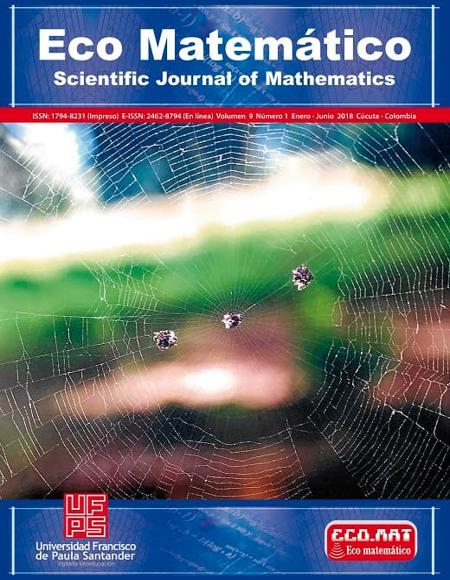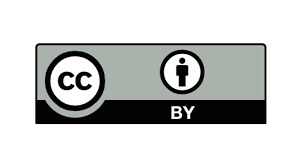¿Por qué Aquiles adelanta a la tortuga?
¿Por qué Aquiles adelanta a la tortuga?
Contenido principal del artículo
Resumen
En esta comunicación se discute cómo se puede explicar la paradoja de Zenón “Aquiles y la tortuga” utilizando la suma de la progresión geométrica decreciente infinita e implementarla en el proceso educativo de la escuela media.
Descargas
Los datos de descargas todavía no están disponibles.
Datos de publicación
Metric
Este artículo
Otros artículos
Revisores/as por pares
0
2.4
Perfil evaluadores/as N/D
Declaraciones de autoría
Declaraciones de autoría
Este artículo
Otros artículos
Disponibilidad de datos
N/D
16%
Financiación externa
No
32%
Conflictos de intereses
N/D
11%
Metric
Esta revista
Otras revistas
Artículos aceptados
5%
33%
Días para la publicación
591
145
Indexado en
- Sociedad académica
- Universidad Francisco de Paula Santander
- Editorial
- Universidad Francisco de Paula Santander
Detalles del artículo
Referencias
Αριστοτέλης. (350 aC). Φυσικὴ ἀκρόασις VI:9, 239b15.
Black M. (1951). Achilles and the Tortoise. Analysis, 11(5), 91–101. doi: 10.1093/ analys/11.5.91.
Cauchy A.-L. (1821). Cours d’Analyse de l’École Royale Polytechnique; I.re Partie. Analyse algébrique. L’Imprimerie Royale, Debure frères, Libraires du Roi et de la Bibliothèque du Roi.
Donnan F. G. (1944). Achilles and the Tortoise. Nature, 153, 464. doi: 10.1038/153464b0.
Egan K. (1992). Imagination in Teaching and Learning: The Middle School Years. Chicago: University of Chicago Press.
Hinton J. M., Martin C. B. (1954). Achilles and the Tortoise. Analysis, 14(3), 56–68. doi: 10.1093/analys/14.3.56.
Jones P. C. (1946). Achilles and the Tortoise. Mind, 55(219), 341–345. doi: 10.1093/ mind/LV.219.341.
Lee H. N. (1965). Are Zeno’s Paradoxes Based on a Mistake? Mind, 74(296), 563–570. doi: 10.1093/mind/LXXIV.296.563.
Misra B., Sudarshan E. C. G. (1977). The Zeno’s paradox in quantum theory. Journal of Mathematical Physics, 18(4), 756–763. doi: 10.1063/1.523304.
Papa-Grimaldi A. (1996). Why Mathematical Solutions of Zeno’s Paradoxes Miss the Point: Zeno’s One and Many Relation and Parmenides’ Prohibition. The Review of Metaphysics, 50(2), 299–314.
Rowland T. (2008). The purpose, design and use of examples in the teaching of elementary mathematics. Educational studies in mathematics, 69(2), 149–163. doi: 10.1007/s10649-008-9148-y.
Thomas L. E. (1952). Achilles and the Tortoise. Analysis, 12(4), 92–94. doi: 10.1093/ analys/12.4.92.
Thomas R. (2000). Mathematical mysteries: Zeno’s Paradoxes. Plus. https://plus. maths.org/content/mathematical-mysteries-zenos- paradoxes.
Van de Walle J. A., Karp K. S., Williams J. M. B. (2007). Elementary and middle school mathematics. Teaching development. Boston: Pearson.
Black M. (1951). Achilles and the Tortoise. Analysis, 11(5), 91–101. doi: 10.1093/ analys/11.5.91.
Cauchy A.-L. (1821). Cours d’Analyse de l’École Royale Polytechnique; I.re Partie. Analyse algébrique. L’Imprimerie Royale, Debure frères, Libraires du Roi et de la Bibliothèque du Roi.
Donnan F. G. (1944). Achilles and the Tortoise. Nature, 153, 464. doi: 10.1038/153464b0.
Egan K. (1992). Imagination in Teaching and Learning: The Middle School Years. Chicago: University of Chicago Press.
Hinton J. M., Martin C. B. (1954). Achilles and the Tortoise. Analysis, 14(3), 56–68. doi: 10.1093/analys/14.3.56.
Jones P. C. (1946). Achilles and the Tortoise. Mind, 55(219), 341–345. doi: 10.1093/ mind/LV.219.341.
Lee H. N. (1965). Are Zeno’s Paradoxes Based on a Mistake? Mind, 74(296), 563–570. doi: 10.1093/mind/LXXIV.296.563.
Misra B., Sudarshan E. C. G. (1977). The Zeno’s paradox in quantum theory. Journal of Mathematical Physics, 18(4), 756–763. doi: 10.1063/1.523304.
Papa-Grimaldi A. (1996). Why Mathematical Solutions of Zeno’s Paradoxes Miss the Point: Zeno’s One and Many Relation and Parmenides’ Prohibition. The Review of Metaphysics, 50(2), 299–314.
Rowland T. (2008). The purpose, design and use of examples in the teaching of elementary mathematics. Educational studies in mathematics, 69(2), 149–163. doi: 10.1007/s10649-008-9148-y.
Thomas L. E. (1952). Achilles and the Tortoise. Analysis, 12(4), 92–94. doi: 10.1093/ analys/12.4.92.
Thomas R. (2000). Mathematical mysteries: Zeno’s Paradoxes. Plus. https://plus. maths.org/content/mathematical-mysteries-zenos- paradoxes.
Van de Walle J. A., Karp K. S., Williams J. M. B. (2007). Elementary and middle school mathematics. Teaching development. Boston: Pearson.








